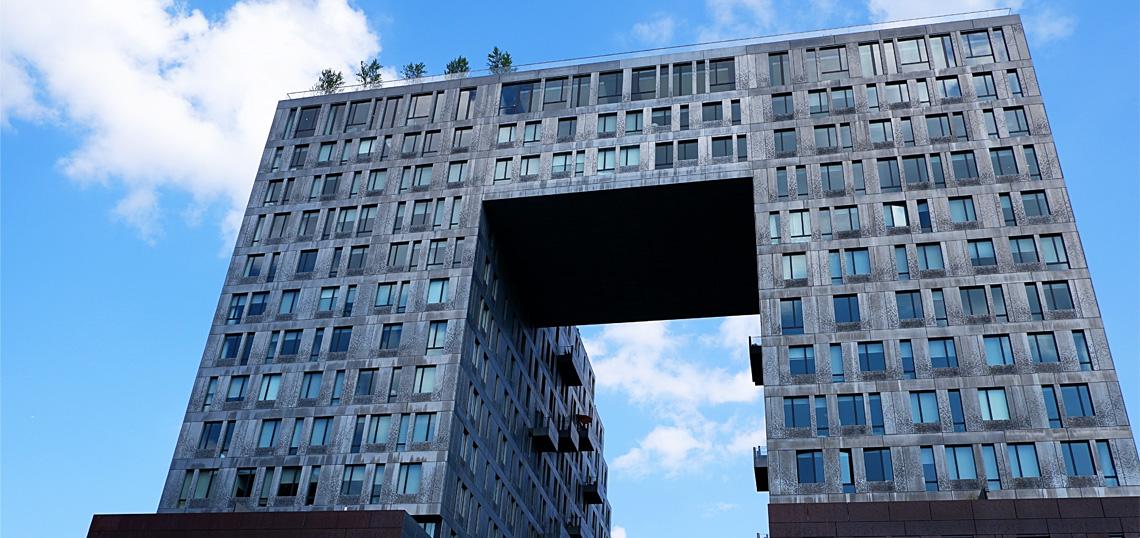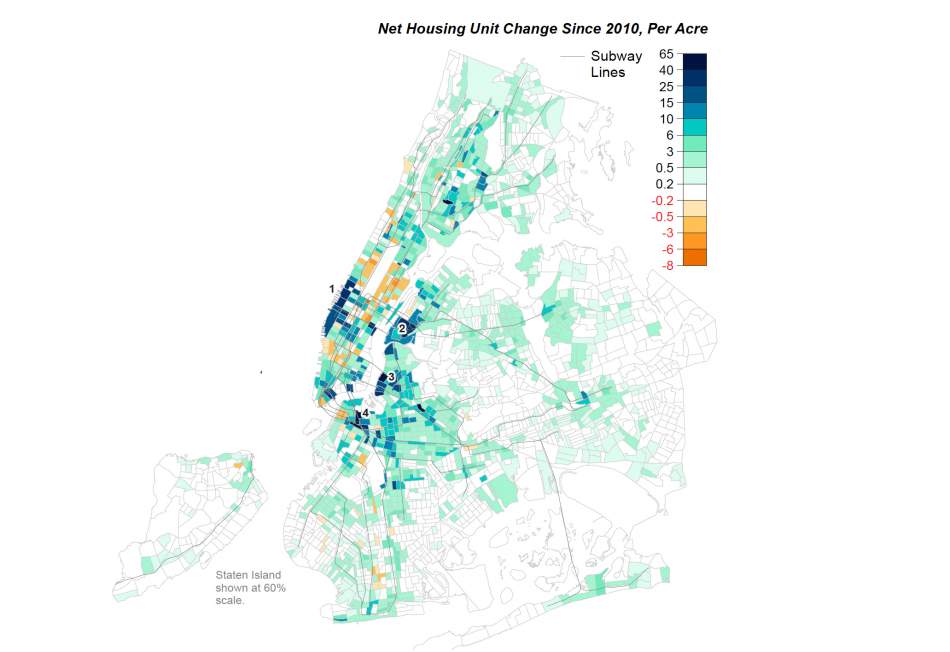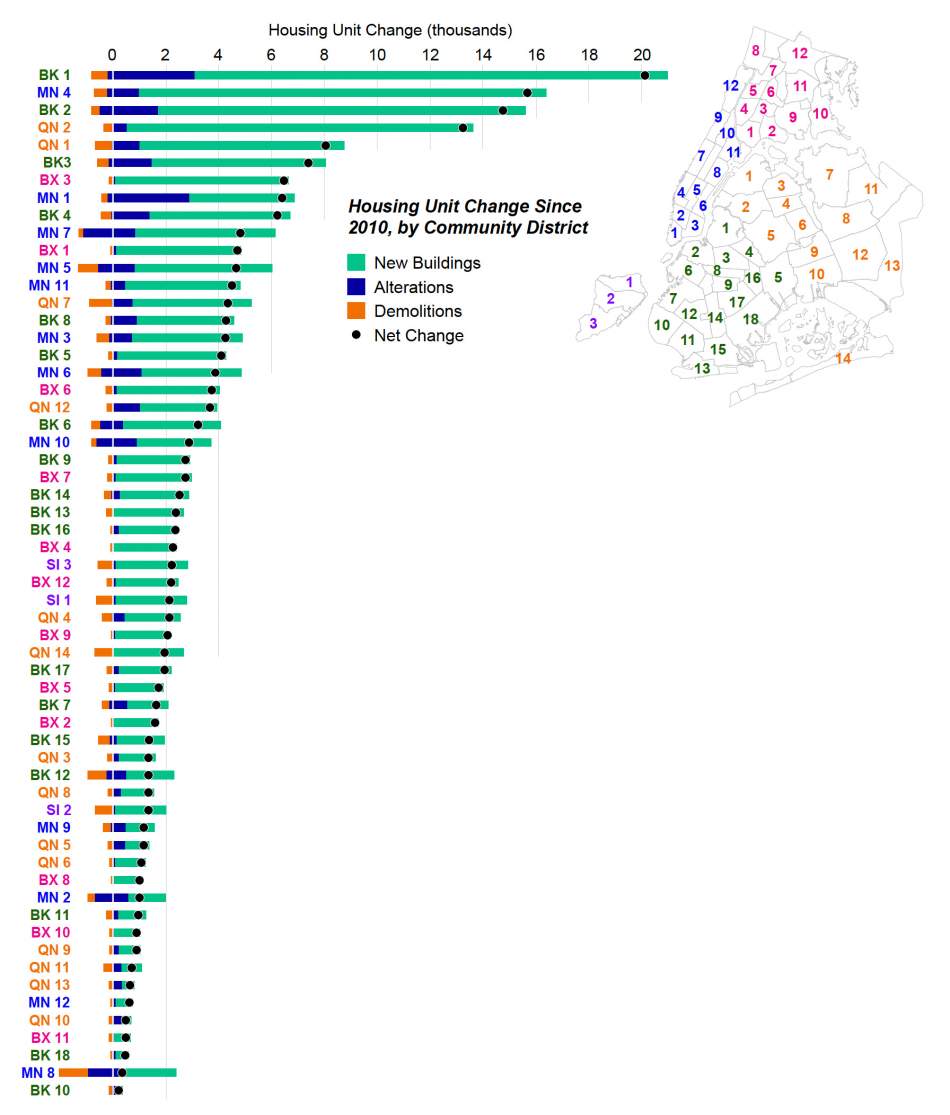A new survey released by the Department of City Planning reveals that NYC netted an additional 205,994 housing units over the last decade (2010-2020). The figure accounts for units not only generated within new developments but factors in those lost and created through alterations and demolitions.
 NYC Department of City Planning
NYC Department of City Planning
As the brief highlights, units within new developments dominated the total with a whopping 202,596 homes added, while alterations—such as the conversion of non-residential structures and the combination or subdivision of homes—added 29,161 units.
Transit rich neighborhoods in Manhattan, Brooklyn, Queens, and the Bronx recorded the highest levels of growth, particularly in areas that were rezoned in the past 20 years. Their dramatically altered skylines (and rising real estate prices) should certainly give them away, but to list them here, they include Hudson Yards, West Chelsea/High Line, Riverside South, Long Island City, Greenpoint, Williamsburg, and Downtown Brooklyn. These neighborhoods accounted for more than one-third of new units.
Losses were moderate overall as modifications that involved either converting space to non-residential use or merging units decreased the figure by 8,723. Demolitions meanwhile trimmed another 17,400 units off.
That being said, while reductions were not substantial on balance, they were highly concentrated among affluent neighborhoods where any gains were eroded by losses.
The worst offenders were the Upper East Side, Upper West Side, Greenwich Village, Noho, and Soho, where reductions in supply were largely the result of owners combining two or more housing units. The Upper East Side, in fact, produced fewer net housing opportunities over the past decade than 57 of the city’s 58 Community Districts.








